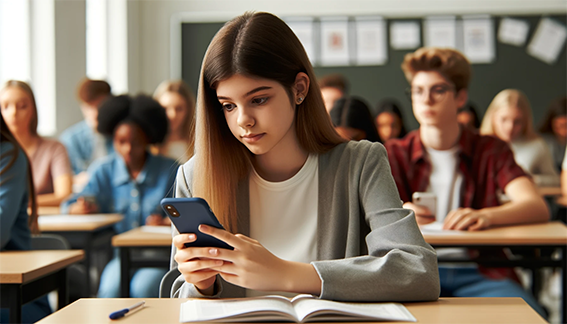
Cell phones have become integral to our daily lives, and the education sector is no exception. With the rise of educational apps and the increasing availability of digital resources, cell phones are being used more and more in classrooms worldwide. Cell phones can be a powerful tool for interactive learning, providing students access to various resources and opportunities for collaboration.
Today, there are numerous phone companies in the market that invest in research and development of cell phones, which are a valuable tool in the classroom, providing students access to information, collaboration, and digital resources. However, to ensure that cell phones are used effectively in the classroom, there are several guidelines that teachers and students should follow.
Here are some tips on how to use cell phones effectively in classrooms:
Establish Clear Guidelines and Expectations
Before incorporating cell phones into the classroom, it is essential to establish clear guidelines and expectations for their use. This can include when and how they can be used, what types of apps and websites are allowed, and what consequences will be imposed for misuse.
Incorporate Interactive Learning
Cell phones can be an excellent tool for interactive learning. Students can use their phones to participate in live polls and quizzes, take pictures of class notes, and collaborate with classmates on group projects. This type of interactive learning can engage students and improve their overall learning experience.
Use Educational Apps
There is a wide range of educational apps available that can be used to supplement classroom learning. These apps can provide students access to a range of resources, including textbooks, study guides, and interactive learning activities.
Encourage Collaboration
Cell phones can also be used to facilitate collaboration between students. By using apps like Google Docs, students can work together on projects in real time, sharing their ideas and insights as they go.
Teach Digital Citizenship
Teaching students about digital citizenship and responsible cell phone use is important. This can include discussing issues such as online safety, cyberbullying, and plagiarism. Students should be encouraged to use their phones responsibly and understand inappropriate behavior's potential consequences.
Provide Technical Support
Cell phones can be a powerful tool in the classroom, but they can also be a source of frustration for students who need to become more familiar with their technical features. To ensure that students can use their phones effectively, providing technical support and training can be helpful.
Minimize Distractions
Cell phones can be a major source of distraction for students, particularly when they are being used for non-educational purposes. To minimize distractions, teachers can establish guidelines for when cell phones should be put away and can also monitor students' phone use during class.
Create Engaging Lesson Plans
To ensure that cell phones are used effectively in the classroom, creating engaging lesson plans incorporating technology is important. This can include activities such as scavenger hunts, digital quizzes, and virtual field trips.
Embrace Student-Centered Learning
Finally, it is important to embrace student-centered learning when incorporating cell phones into the classroom. This means giving students the freedom to explore and use their phones in ways that are most meaningful to them while also providing guidance and support as needed.
Use social media for Learning
Social media platforms can be a great way to engage students and provide them with access to a range of resources. Teachers can use social media to create discussion groups, share information about upcoming assignments, and provide students with a platform to collaborate with one another.
In a nutshell, to ensure that cell phones are used effectively, it is important to establish clear guidelines and expectations, provide technical support, and create engaging lesson plans that incorporate technology.













